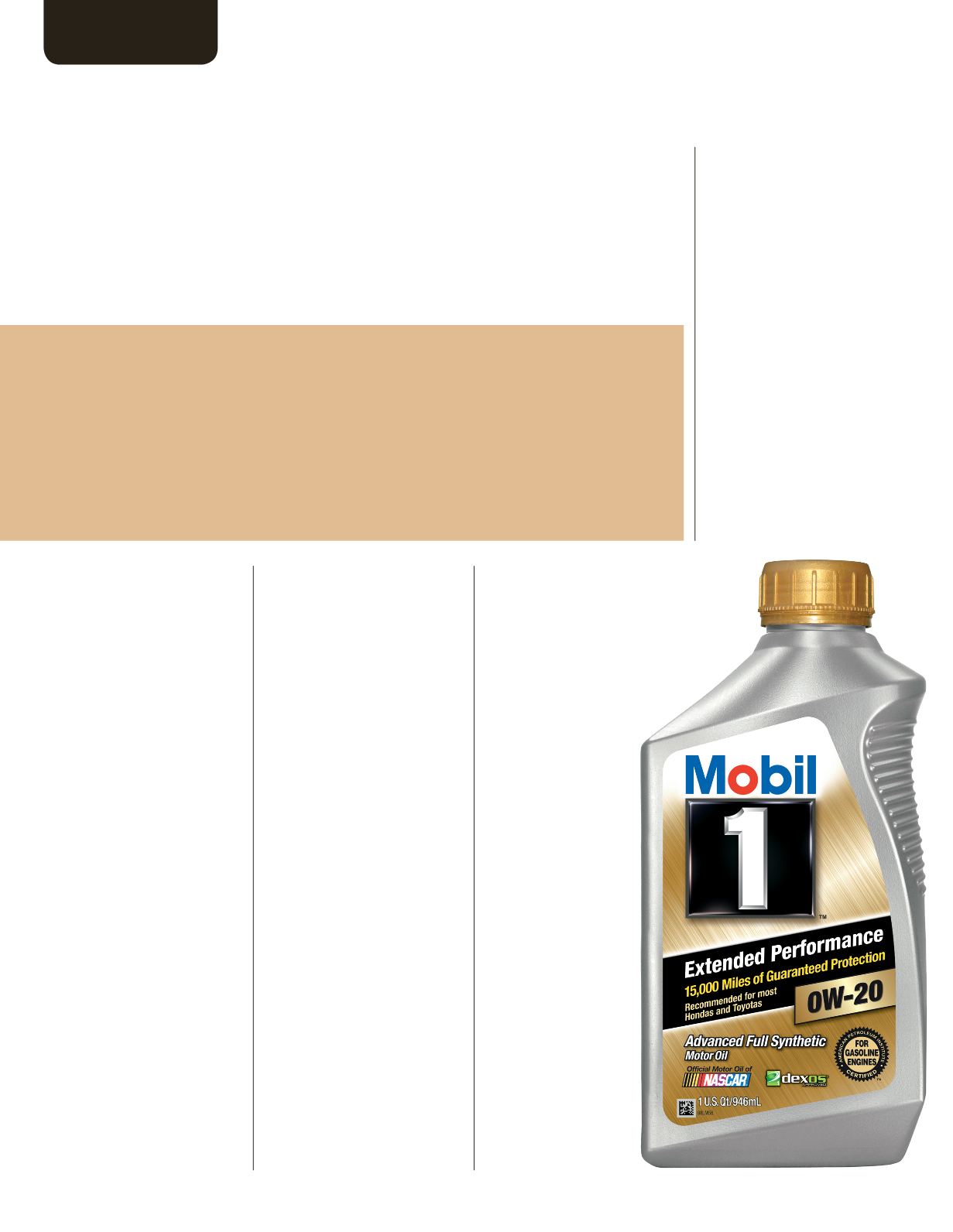
FUELS & LUBES INTERNATIONAL
Quarter Four 2014
44
F E A T U R E
ILSAC, which now stands
for the International Lubricant
Specification Advisory Commit-
tee, has requested the Auto-Oil
Advisory Panel (AOAP), the
body that superseded ILSAC-
Oil, for a new certification mark
to distinguish between ILSAC
GF-6A and GF-6B.
AOAP is comprised of
members from the American
Petroleum Institute (API), the
American Chemistry Council,
ILSAC and the Japan Automo-
bile Manufacturers Association
(JAMA). Its members need to
decide whether ILSAC GF-6B
will be distinguished with a new
certification mark or some other
method.
According to the “needs”
statements of GF-6A and GF-6B,
a new ILSAC oil category is nec-
essary for several reasons, first
among them being fuel econ-
omy. Fuel economy is driven
by regulations such as the one
released in the United States in
2012 by the Obama Administra-
tion. Under these new standards,
the average fuel economy for
cars and light trucks in the U.S.
is expected to double to 54.5
U.S. miles per gallon (mpg) by
2025.
GF-6 oils will have better
fuel economy than GF-5 oils.
The improvements in engine
cleanliness that will be seen
include fewer weighted piston
deposits, less engine sludge, less
engine varnish and less viscosity
increase with oxidation.
Thus, almost every engine
test is being updated or re-
placed. New concerns have also
emerged, such as low-speed pre-
ignition (LSPI) and cam timing
chain wear. The Sequence VH
chain wear test and an LSPI test,
both sponsored by Ford, have
been added to the matrix for
those purposes.
Engine designers are mak-
ing smaller engines to meet
corporate average fuel economy
(CAFE) standards. These en-
gines are working harder and
running hotter, meaning that lu-
bricants have to work harder, as
well. Furthermore, engines are
evolving as gasoline direct-in-
jection (GDI) and turbocharged
gasoline direct injection (TGDI)
technology is added. TGDI en-
gines have a higher risk for LSPI
events, which is why LSPI is now
a performance parameter and
part of the testing matrix.
Instead of one new category,
i.e., ILSAC GF-6, there will be
two. ILSAC GF-6A will replace
the current GF-5, which is rep-
resented by the Starburst/Cer-
tification Trademark, and will
provide a new performance level
of engine oils for spark-ignited
internal combustion engines.
GF-6A will be backward com-
patible with GF-5. This new
performance standard will
provide improvements
relative to GF-5 in the
following categories:
fuel economy (fresh
oil) and fuel economy
retention (aged oil);
emission system
compatibility and
engine oil robustness
to provide perfor-
mance levels required
to protect engines in
all global markets. It
will have a minimum
high temperature high
shear (HTHS) viscos-
ity of 2.6 mP•s.
ILSAC GF-6B will
be a new specifica-
tion providing a new
performance level for
low viscosity engine
oils for spark-ignited
internal combustion
engines. It will have
a maximum HTHS
viscosity of 2.6 mP•s.
A new certification mark for
Will ILSAC GF-6B get a new certification
mark that will distinguish this new
passenger car engine oil category being
developed by North American and
Japanese carmakers in conjunction with
oil and additive suppliers?
ILSAC GF-6B?
It will not be backward compat-
ible with GF-5.
At the AOAP meeting held
on Aug. 13 in Dearborn, Mich.,
USA, API, which licenses the
ILSAC mark, discussed the re-
sults of an opinion poll that was
used to test the waters on the
possibility of a new certification
mark for GF-6B.
The poll consisted of three
options: 1) to use the current
API certification mark, the
starburst, for all eligible viscos-
ity grades; 2) to keep the current
certification mark for GF-6A
and have no certification mark
for GF-6B; and, 3) to add a new
symbol to establish a second
certification mark for GF-6B.
Represented in the poll were
key industry stakeholders,
including OEMs, oil market-


